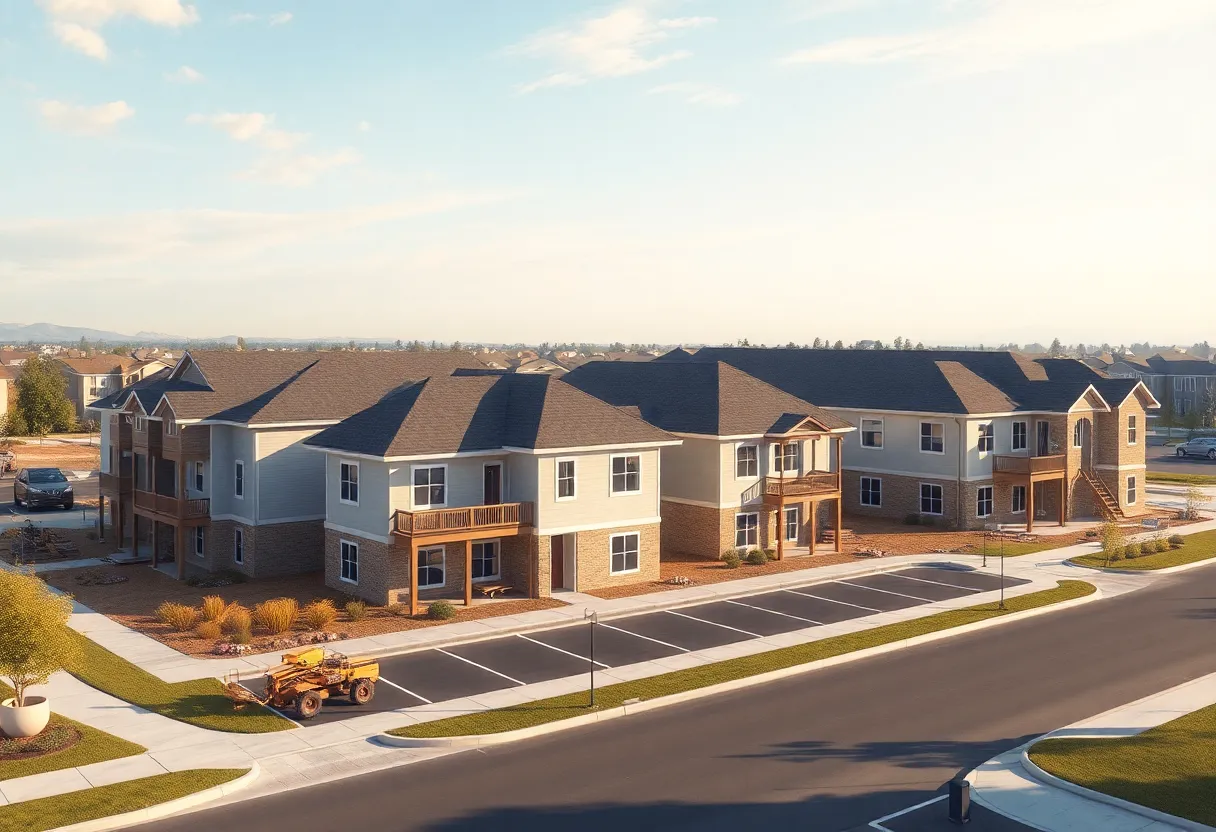Lee County, Florida, August 22, 2025
News Summary
Skanska has been awarded a roughly $435 million public-private partnership to deliver a 560,000-square-foot hospital and medical office complex in Florida. The project includes a five-story hospital and an adjacent medical office building, central energy plant, ambulatory surgery center and expanded emergency capacity. Skanska plans to use Integrated Project Delivery, design-assist, prefabrication and BIM to reduce cost and schedule, citing typical savings of 10–15%. The firm emphasizes local hiring and supplier development, with a majority of subcontracting expected to be local and a significant share awarded to minority firms. Utility work is already underway.
Skanska’s U.S. healthcare push converges on PPPs, IPD delivery, and a global market eyeing a steep rise by 2034
Skanska AB is sharpening its focus on U.S. healthcare construction by blending public-private partnerships with innovative delivery methods to unlock gains in time and cost. A flagship example is a 435 million USD public-private partnership arrangement in Florida to build a new hospital and medical office building for Lee Health. The project is notable for its co-located design and construction teams, a Big Room setup that ties planners, designers, and builders into a single workflow. In practical terms, this approach is linked to a 10% reduction in project costs and a 15% shorter timeline compared with traditional delivery, according to project stakeholders. The hospital complex, set to open in late 2027, comprises a 38,600-square-meter hospital, a central energy plant, and a 11,600-square-meter medical office building, all designed to work as a single, efficient campus. The center will also feature a dedicated ambulatory surgery capability and multiple clinics, consolidating services into one facility.
Beyond the Florida project, Skanska frames a larger trajectory: the US healthcare construction market is being reshaped by demographic shifts, new care models, and modernization efforts that emphasize resilience and sustainability. The sector is identified as a cornerstone of infrastructure-driven growth, with a global market opportunity projected to reach 442.0 billion USD by 2034. Skanska positions itself to capitalize on that expansion by leveraging Integrated Project Delivery (IPD), sustainability-first design, and a network of strategic partnerships and local subcontractors to mitigate supply chain risk.
Market fundamentals and growth drivers
The U.S. healthcare construction market is described as growing in step with aging demographics and the shift toward outpatient care. The population aged 65 and older is expected to grow by around 20% by 2030, a trend that drives demand for specialized facilities and expanded outpatient networks. Ambulatory surgical centers are among the fastest-growing segments, with commentary placing their CAGR at roughly 12.3%. In parallel, the broader global market for healthcare construction is forecast to surge from about 284.6 billion USD in 2024 to 442.0 billion USD by 2034, representing a CAGR near 4.5%.
Domestic project activity is supported by steady demand for capacity expansion and modernization of aging facilities. The public-private partnership model is highlighted as a way to align incentives, share risk, and keep long-term blocks of work stable for contractors and healthcare systems alike. In this context, Skanska has positioned itself as a leader in IPD and other collaborative delivery methods, aiming to convert risk-adjusted opportunities into reliable execution and value for healthcare systems.
Delivery methods, efficiency, and notable outcomes
Two signature approaches underpin Skanska’s efficiency narrative. The first is Integrated Project Delivery (IPD), often paired with design-assist strategies to bring architects, engineers, and builders into synchronized planning early in the project. The second is a Big Room environment that co-locates design and construction teams to shorten decision cycles and improve constructability. The Florida project cites a 10% cost savings and a 15% faster schedule as outcomes of this collaboration framework. Other examples point to acceleration and savings: a North Carolina heart and vascular hospital expansion was completed ahead of schedule, allowing savings to finance an additional floor, while a campus expansion at the University of Washington used prefabrication and BIM to realize a reported $3.5 million in savings and a 10-week reduction in construction time.
In addition to schedule and cost performance, Skanska emphasizes the use of design-build and IPD as core delivery hallmarks. The company touts a steady stream of projects in its pipeline—micro-hospitals, specialized care centers, and sustainability-focused hospital expansions—each benefiting from modular design, energy-efficient systems, and performance-based procurement. A steady emphasis on modular construction aligns with hospitals’ need to future-proof facilities against evolving clinical programs and regulatory expectations.
Selected projects and capabilities in action
Micro-hospitals like Nutex Health’s 20,000-square-foot facility in Albuquerque illustrate how Skanska is applying its design and delivery playbook to smaller-scale, high-demand settings. In larger care environments, expansions like UF Health Shands Cardiovascular/Neuroscience Hospital and the University of Virginia Health System’s University Hospital Expansion demonstrate the push toward LEED-certified, energy-conscious facilities. Across these projects, Skanska’s strategy centers on leveraging IPD and design-assist tools to reduce waste, compress schedules, and align stakeholders around shared goals.
To bolster resilience and local economic impact, the Golisano project in Florida includes substantial local and minority subcontractor participation, with roughly 55% of subcontracting to local firms and 22% to minority-owned businesses. Such engagement supports local workforce development and helps mitigate supply chain vulnerabilities by broadening the pool of capable partners near job sites.
Partnerships, programs, and long-term bets
Skanska’s U.S. arm has built a broad ecosystem through sustained partnerships and workforce development programs. Since 2007, the Building Blocks program has educated around 800 companies and led to roughly $740 million in contracts with Skanska. The program offers free multiweek courses on contracting methods, insurance bonds, safety requirements, and sustainability, with Skanska professionals teaching sessions on human resources and site logistics. The aim is to cultivate a base of capable, diverse firms that can participate in larger projects, while Skanska retains continuity and quality across its portfolio.
Strategic collaborations extend to academic institutions as well; Skanska has partnered with the University of South Florida since 2021, reinforcing a locally grounded approach to growth. In the Lee Health project, utility work has begun and the project is slated for completion in the fourth quarter of 2027, with the work booked in Skanska’s order book for the end of 2024. These relationships are designed to smooth execution, reduce risk, and create a steady pathway to more PPP opportunities in 2026 and beyond.
Challenges and risk management
Despite strong momentum, the sector faces challenges from rising material costs and a complex regulatory environment. Inputs such as steel and rebar have risen substantially since 2019, adding pressure on project budgets and schedules. Skanska’s strategy cites its ability to manage supply chain risk through long-term partnerships, a diversified supplier base, and a disciplined project controls approach aimed at mitigating cost overruns and delays.
Summary
In a time of demographic change and rapid innovation, Skanska presents a comprehensive package for U.S. healthcare construction: PPP-backed projects, IPD-driven efficiency, modular design and sustainability focus, and a robust ecosystem of partners and programs designed to expand capacity while containing risk. The Florida Golisano project is the emblematic test case—demonstrating how a Big Room, integrated delivery, and strong local engagement can translate into tangible time and cost savings, improved patient pathways, and a scalable model as the sector eyes a future that could see hundreds of billions in yearly market activity.
Key features at a glance
| Feature | Description |
|---|---|
| Delivery model | Integrated Project Delivery (IPD) combined with design-assist and a Big Room for collaboration |
| Major project example | Lee Health/Golisano Children’s Hospital and Medical Office Building in Florida, a 435 million USD PPP |
| Cost and time savings | Reported 10% cost reduction and 15% faster schedule on the Florida project |
| Market context | Global healthcare construction market expected to hit 442.0B USD by 2034; US spend rising toward 69.78B USD by 2025 |
| Growth drivers | Aging population, shift to outpatient care, and post-pandemic modernization |
| Local impact and inclusion | High local and minority subcontractor participation in flagship projects |
| Education and ecosystem | Building Blocks program builds capacity in smaller firms; USF partnership strengthens local pipelines |
FAQ
A: The strategy centers on public-private partnerships, integrated project delivery, and collaborative design to improve cost efficiency, shorten schedules, and position Skanska to capitalize on a growing healthcare construction market.
A: An aging population, a shift toward outpatient care, and modernization of healthcare infrastructure, including seismic resilience and energy efficiency.
A: It is a flagship example of a PPP with co-located design and construction teams achieving cost and time savings, while expanding pediatric healthcare capacity in Florida.
A: IPD aligns architects, engineers, and builders early, streamlining decision-making, reducing waste, and enabling faster delivery, especially when combined with a Big Room approach.
A: With a projected global market of 442.0 billion USD by 2034, Skanska’s emphasis on partnerships, IPD, and scalable delivery methods positions it to pursue a sustained pipeline of healthcare projects.
Notes on data sources and context
The information reflects a comprehensive view of Skanska’s activities in U.S. healthcare construction, including notable projects, delivery approaches, and market projections. The emphasis is on providing a clear, informative snapshot of how delivery models, partnerships, and pipeline projects contribute to a broader transformation in healthcare infrastructure.
Deeper Dive: News & Info About This Topic
Additional Resources
- Construction Dive: Skanska Florida hospital (Lee Health PPP)
- Wikipedia: Skanska
- CoStar: Skanska’s new South Florida vice president to spearhead growth
- Google Search: Skanska South Florida vice president
- Global Construction Review: Skanska completes $38M Florida high school expansion
- Google Scholar: Skanska Florida high school expansion
- Construction Dive: Skanska mentor small-business program
- Encyclopedia Britannica: Skanska small business program
- WEAR-TV: Court sides with Skanska, dismisses claims over Hurricane Sally damages
- Google News: Skanska Hurricane Sally court





